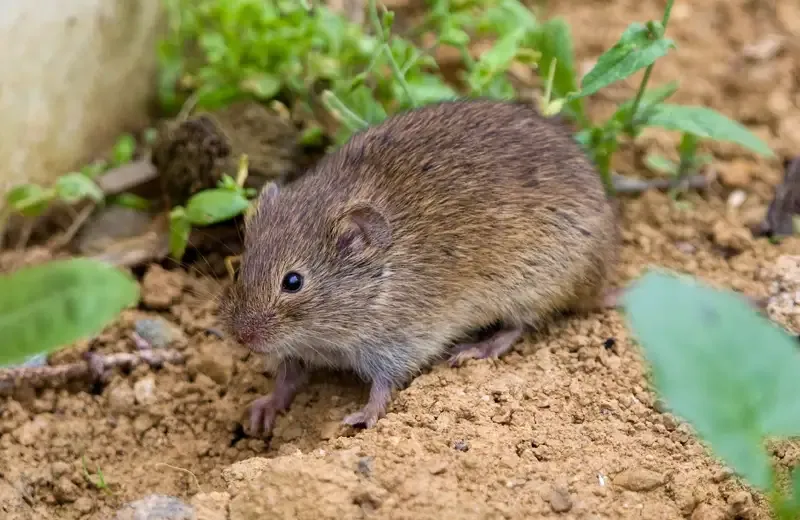Comprehensive Overview to Reliable Vole Bug Control: Invasion Identification and Treatment Approaches
In the realm of reliable parasite control, vole invasions present an unique difficulty that requires a strategic strategy. By checking out the subtleties of vole habits, recognizing key indications of invasion, and reviewing a variety of control options, one can create a comprehensive method to battle these elusive insects.
Understanding Vole Behavior
Vole behavior is defined by their tunneling behaviors and rapid reproduction prices, making them a difficult insect to control properly. These small rats usually create complex passage systems underground, utilizing them for shelter, food storage, and transportation. Voles are herbivores, consuming a variety of plants, roots, bulbs, and grasses, which can create substantial damages to yards, orchards, and grass. Their rapid reproductive rate additional makes complex control efforts, with women efficient in producing multiple clutters in a solitary year, each consisting of numerous spawn.
Voles are most active throughout the early morning and evening hours, investing the bulk of their time foraging for food. Their burrowing habits not just disturb yards and yards but also make them challenging to find and eliminate. Recognizing vole actions is crucial for efficient parasite control strategies. By determining their burrow locations, checking feeding areas, and applying targeted control approaches, such as capturing or environment adjustment, vole invasions can be managed effectively.
Indicators of Vole Invasion

Avoidance Methods
Executing reliable avoidance approaches is essential in reducing vole i was reading this problems and protecting greenery from their harmful feeding behaviors (vole pest control). To stop vole problems, it is important to begin by getting rid of possible food resources and shelter. Keep turf and plants cut short, get rid of weeds and debris, and maintain a clean garden or lawn to make the area less appealing to voles. Installing barriers such as hardware cloth or underground secure fencing can likewise help deter voles from going into specific areas. Additionally, minimizing excess moisture by dealing with leaking pipelines and guaranteeing appropriate water drainage can make the atmosphere less congenial for voles.
Routinely examining the residential property for indicators of vole activity, such as paths and burrow openings, is crucial for early discovery and prompt activity. If vole activity is suspected, think about making use of traps or repellents strategically put near their pathways.
Non-Lethal Control Approaches
To successfully take care of vole populaces while focusing on gentle techniques, non-lethal control approaches supply useful remedies for lowering vole damages in landscapes and yards. These obstacles can be buried at the very least 12 inches deep and bent at a 90-degree angle to avoid voles from look here tunneling below.

Lethal Control Options
One effective method for addressing vole infestations in landscapes and gardens entails the critical usage of lethal control alternatives. When faced with a severe vole infestation that non-lethal techniques have actually fallen short to consist of, implementing lethal control procedures comes to be essential. Generally, when utilizing deadly control choices, it is important to do so sensibly and in conformity with regional guidelines to properly manage vole problems.
Conclusion
To conclude, efficient vole pest control needs an extensive understanding of vole habits, recognition of indications of infestation, application of avoidance methods, and use of both deadly and non-lethal control methods. By incorporating these strategies, people can efficiently take care of vole populations and protect their residential property from damage. It is essential to address vole infestations without delay to avoid additional concerns and minimize the influence on the surrounding environment.
Offered the intricate tunnel systems and fast recreation prices characteristic of voles, acknowledging the indicators of vole problem becomes important in reliable pest control. One moved here of the key signs of vole presence is the existence of surface paths or routes in turf or snow, normally regarding 1-2 inches wide, developed as voles take a trip between their burrows and food resources.To successfully take care of vole populations while focusing on gentle methods, non-lethal control techniques use sensible options for lowering vole damage in gardens and landscapes.One reliable technique for attending to vole invasions in landscapes and yards includes the strategic usage of dangerous control choices. vole yard damage.In final thought, effective vole parasite control requires an extensive understanding of vole actions, identification of indications of infestation, implementation of prevention techniques, and usage of both lethal and non-lethal control approaches